#Communication Tools
Explore tagged Tumblr posts
Text
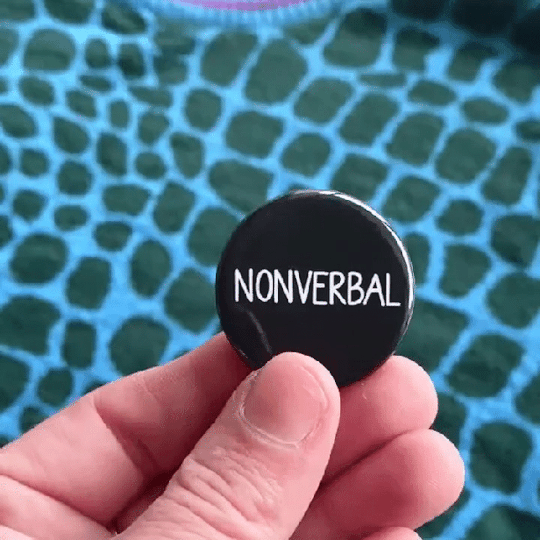
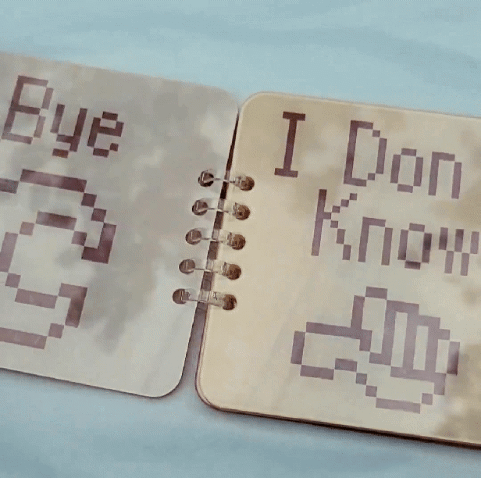
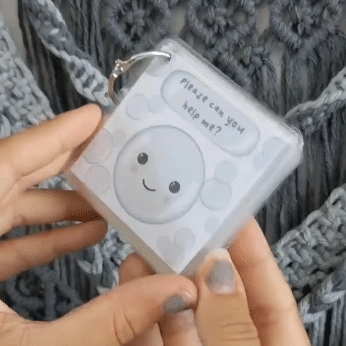
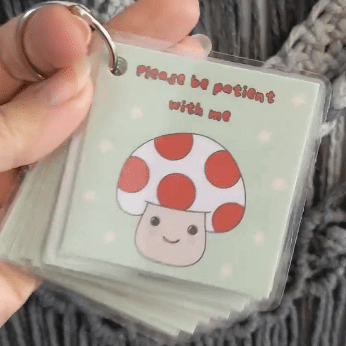
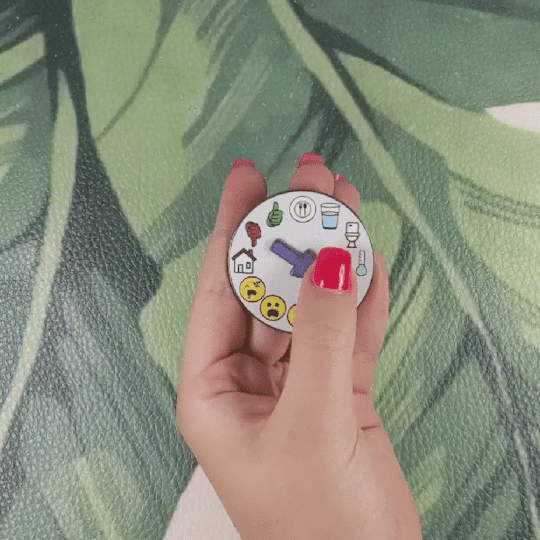
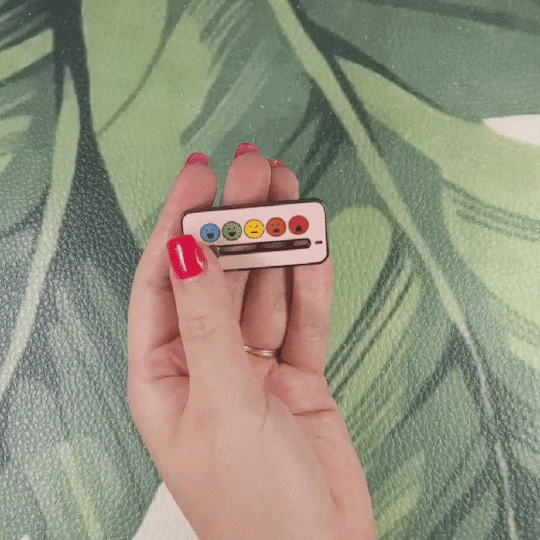
Communication aids
×/× ×/× ×/×
#text#stim#gifs#my gifs#autismposting#autism aids#autism tools#communication aids#communication tools#disability aids#disability aid#enamel pins#pins stim#irl hands tw#buttons stim#nonverbal#semiverbal#communication cards#pixel art stim#communication cards stim#autism pin#examining#flipping#emotions#asd#autism spectrum disorder#autism#stimmy#sensory#stimming
255 notes
·
View notes
Text
(TL;DR: We should use wearing a yellow wristband/lanyard or having a yellow emoji in your display name/bio as a symbol of "I don't want to participate in this holiday." Please share if you agree, because this would be a very useful tool for many people!)
As we're coming up on April Fool's, I've just realized that I don't think I've ever seen any sort of agreed upon symbol of "I don't want to be pranked"???
Which. Is really surprising to me, actually????
I tried to look it up, but all I found was "How to survive April Fool's without getting pranked!!" which basically just boils down to "isolate yourself/be paranoid for a day" which in and of itself is kind of participating in the holiday.
There's still a level of enjoyment to be had in overpreparing to avoid any and all pranks for a lot of people who don't actually have issues with it.
But there's a lot of people who do genuinely have issues of it and would like to be able to go about their day normally without worrying about it, including myself.
(Now, I would like to clarify that I'm not trying to demonize ppl who do want to participate or whatever. I just wish there was an easy way to communicate to them that I don't want to participate.)
So... I would like to propose wearing a yellow wristband or lanyard to say "I do not want to participate in this holiday".
That way, it also applies to other similar holidays that involve doing something to someone!
April Fool's Day: Please don't prank me
St. Patrick's Day: Please don't pinch me
Valentine's Day: Please don't confess to me/give me valentines
Christmas: Please don't give me gifts
I feel like I've seen people talk about being scared of some of these holidays for different reasons, but I haven't really seen any actual solutions for it besides "tell people around you" (which doesn't work for events where it could be anyone) and "be paranoid about it" which is just. Not an actual solution.
Plus, it would also work online! You could put a yellow emoji (such as 💛, 🟡, or 🟨) in your display name or bio. It could also be used as a symbol when expressing your boundaries for certain holidays, like so:
🟨April Fool's🟨: Please don't send me gore or jumpscares, but harmless April Fool's videos or memes are fine
(Though, not sending gore to people PERIOD is also just common fucking sense, but I digress)
Please share this around if you would like to help make this a known symbol of "I don't want to participate in this holiday!" It would be very appreciated and very useful and I'm still really shocked that I haven't seen anybody do this yet.
#this was just something i realized when my french teacher was talking about poisson d'avril. and i really hope i can get this off the ground#because this would be so incredibly helpful to have as a tool that people know about.#and i know that there's other people who would also really appreciate it.#psa#important#april fools#april fools day#april fool's#april fool's day#holiday#holidays#yellow#autism#neurodivergent#autism awareness#adhd#awareness#mental health#mental health awareness#neurodivergence#communication#communication tools#poisson d'avril#poisson davril#rookii rambles
19 notes
·
View notes
Text
Hey! I make silly little things to help you express yourself and your needs, as well as funny and relatable stuff! You can buy disability badges, stickers, communication keyrings, feelings charts and magnets and more on my etsy! You can also get yourself a funny or relatable T-shirt, super soft sensory-friendly blankets, or communication hoodies on my website! Check out my links here!
#artists on tumblr#communication tools#disabled artist#artist on kofi#digital artist#autistic artist
7 notes
·
View notes
Text
Best Communication Platforms to Enhance Collaboration for Businesses
As a business messaging, work chat, and instant messaging solution for both office and remote work, Troop Messenger is regarded as one of the greatest team communication platforms.
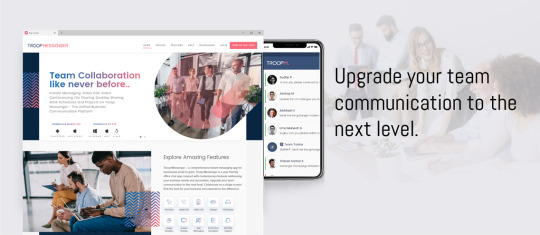
#team communication tools#communication tools#internal communication software#troop messenger#team communication platforms#communication#business#secure communication#chat#messaging app#collaboration tool#office communication
2 notes
·
View notes
Text
here is a link to a carrd about tone indicators!!
it could be very useful for a lot if people, so i thought it’d be a good idea to share!!
!! tone indicators !!
#tone indicators#autism#asd#adhd#communication#communication tools#helpful resource#neurodiversity#autistic things#actually autistic#actually adhd#neurodivergent#helpful#carrd resources#resources#attention deficit hyperactivity disorder#autism spectrum disorder#useful#i hope this helps!!
5 notes
·
View notes
Text
Understanding Fleets: Key Organizations in the Trucking Industry
The trucking industry is a vital component of the global economy, responsible for moving goods efficiently across vast distances. Within this intricate network, various organizations play essential roles in shaping operations, regulations, and the future of trucking. Understanding these key organizations is crucial for industry stakeholders, from fleet managers to logistics providers.

For-hire carriers and Private Fleets
For-hire carriers are companies that transport goods for others in exchange for compensation.
Common Carriers: These carriers offer services to the general public and are obligated to transport goods as long as they have the capacity and are lawful.
Contract Carriers: These carriers provide services based on specific contracts with shippers, allowing for tailored transportation solutions that meet unique customer needs.
Private Fleets, on the other hand, are operated by companies to transport their products. Firms like Walmart and Coca-Cola manage private fleets to control logistics and distribution effectively, ensuring timely deliveries and cost efficiency. 2. American Trucking Associations (ATA)
The American Trucking Association is the largest national trade organization representing the trucking industry. Founded in 1933, the ATA advocates for the interests of trucking companies, working on issues such as safety regulations, infrastructure funding, and tax policies. They provide valuable resources, including industry research, educational programs, and networking opportunities, helping members stay informed about best practices and legislative changes. 3. Trucking Industry Defense Association (TIDA)
The Trucking Industry Defense Association focuses on legal and regulatory issues affecting the trucking sector. TIDA works to protect the interests of trucking companies in legal matters, providing resources, education, and representation to help navigate complex legal challenges. Their efforts ensure the latest legal developments and the necessary support to address potential liabilities. 4. National Association of Small Trucking Companies (NASTC)
The National Association of Small Trucking Companies represents the interests of smaller trucking businesses. NASTC offers resources, advocacy, and networking opportunities tailored to the unique challenges faced by small operators. The association provides members access to discounted services, insurance programs, and training opportunities, helping to level the playing field with larger competitors. 5. Fleet Management Associations
Numerous associations focus on fleet management, promoting best practices, and providing resources to help companies improve their operations. These organizations offer training, certifications, and networking events aimed at enhancing fleet efficiency and safety. Key associations include:
The Association for Fleet Management Professionals (NAFA): NAFA provides resources and education for fleet managers, focusing on innovative practices, sustainability, and regulatory compliance.
The National Private Truck Council (NPTC): NPTC represents companies that operate private fleets, offering members access to industry research, benchmarking data, and educational resources specific to private fleet operations. 6. Regulatory Bodies
Various regulatory bodies oversee the trucking industry to ensure safety and compliance. Key organizations include:
Federal Motor Carrier Safety Administration (FMCSA): The FMCSA regulates the trucking industry in the United States, establishing safety standards, monitoring compliance, and enforcing regulations to protect public safety.
Department of Transportation (DOT): The DOT oversees transportation infrastructure and policies, ensuring that roads and highways are for safe and efficient trucking operations.
Conclusion
Understanding the key organizations in the trucking industry is essential for navigating the complexities of fleet management and logistics. From advocacy groups like the American Trucking Associations to regulatory bodies like the FMCSA, these organizations play vital roles in shaping the industry landscape. By engaging with these entities, trucking companies can enhance their operations, stay informed about industry trends, and advocate for their interests in a rapidly changing environment. As the trucking industry continues to evolve, collaboration and support from these organizations will be critical to ensuring efficient and sustainable transportation solutions.
#trucking companies#immense trucking solutions ltd#real-time tracking#trucking company#National Association#communication tools#sustainability#efficient
2 notes
·
View notes
Text
Equipping for Impact: Essential Tools for Successful Media Coverage
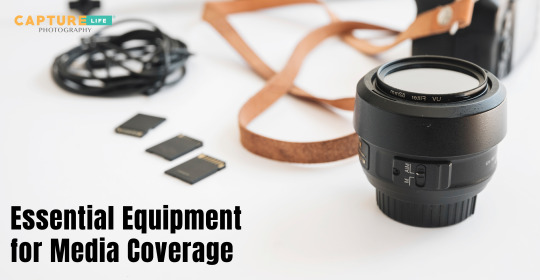
Equipped with the appropriate gear, one can capture a story with accuracy or overlook important information in the hectic world of media coverage. It is critical to have the necessary equipment on hand whether you work as a front-line journalist, a photographer recording events, or a filmmaker capturing the moment.
In this blog, let’s take a quick look at the essential tools for media coverage in this blog post and how each one is essential to delivering the story.
Must have equipments for media coverage
Here is a list of all the required equipments needed for a media coverage:
Camera
A reliable camera is the foundation of any arrangement for media coverage. Having a device that can take excellent photos and videos is crucial, regardless of whether you use a DSLR, mirrorless camera, or even a smartphone. To guarantee that you can record crisp, clear video in any circumstance, look for features like quick focusing, low light performance, and picture stabilization.
Lenses
To take a range of pictures in various settings, you need a collection of adaptable lenses. While a telephoto lens enables you to zoom in on far-off subjects and catch details from a distance, a wide-angle lens is best for capturing vast scenes and establishing pictures. Think about purchasing both prime lenses—which have faster aperture settings and better image quality—and zoom lenses—which are more versatile and convenient.
Audio Equipment
When it comes to media coverage, clear, crisp audio is equally as crucial as excellent graphics. To record crystal-clear audio in any setting, spend money on a high-quality microphone system that includes both shotgun and lavalier microphones. You may make precise word captures by monitoring and adjusting audio levels on the fly with the use of a portable audio recorder or mixer.
Tripod or monopod
The secret to getting steady, polished video is stabilization. You may easily capture time-lapse sequences, long exposures, and smooth panning photos with the steadiness and support of a strong tripod or monopod. Seek for a portable, light-weight solution that is convenient to move to different places.
Lighting Equipment
Especially in low light or inside environments, well-lit shots can make all the difference in the world. Purchase on-camera flashes or portable LED lights to brighten your subjects and give your photos more depth and character. To create a more pleasing light and soften sharp shadows, think about use diffusers and reflectors.
Portable Power Solutions
It's critical to have portable power solutions on hand to keep your equipment charged and operational when working in remote areas where access to power outlets may be restricted. Purchase portable battery packs, solar chargers, and extra batteries to make sure you never run out of power when you need it most.
Portable Storage
Having enough capacity on your device to store your images and movies is essential because media coverage generates a lot of data. Invest in portable hard drives and high-capacity memory cards to save your files safely.
Protective Gear
It's important to put safety first because media coverage frequently brings you into unpredictably changing and occasionally dangerous circumstances. To shield your equipment from the weather, spend money on weatherproof camera bags, lens hoods, and lens filters. To protect your personal safety and comfort while on assignment, think about dressing in cozy, weather-appropriate clothes and shoes.
Communication Tools
Collaborating with coworkers, conducting source interviews, and maintaining connections while working on an assignment all depend on effective communication. To make sure you can stay in contact with your team even in difficult or remote places, invest in dependable communication tools like satellite phones, two-way radios, or smartphones.
Editing tools
Having access to high-quality editing tools after capturing your material is crucial for honing your captured shots and presenting the narrative in an engaging way. Invest in industry-standard editing tools, such as Adobe Photoshop or Lightroom for photo editing, and Adobe Premiere Pro or Final Cut Pro for video editing. Learn about these tools and how they can help you realize your vision with accuracy and originality.
Conclusion
To sum up, having the appropriate tools is crucial for effective media coverage. Whether you're taking pictures, filming films, or conducting interviews, investing in top-notch equipment will guarantee that you can accurately and clearly tell a narrative. Every piece of equipment, from lenses and cameras to audio equipment and editing software, is essential to telling the story and successfully engaging the audience. By arming yourself with the necessary tools of the trade, you'll be prepared to approach any task with professionalism and assurance.
#media coverage#journalism tools#camera equipment#audio gear#editing software#communication tools#portable storage#lighting equipment#protective gear#tripod#lenses
3 notes
·
View notes
Text
Mastering Strategic Communication: A Guide to Top Communication Plan Template Tools
In the dynamic landscape of today's business world, effective communication is the linchpin for success. Crafting a well-thought-out communications plan is crucial, and having the right tools at your disposal can make all the difference. Whether you're a seasoned professional or a budding communicator, exploring the realm of communication plan template tools can streamline your strategic planning process.

Navigating the Toolbox: Unveiling Essential Communication Plan Templates In the quest for seamless communication, having a toolkit of reliable templates can be a game-changer. Let's explore some of the top communication plan template tools that professionals swear by:
Now armed with the right tools, let's delve into the process of creating a robust communications plan:
Step 1: Define Objectives and Goals Clearly outline what you aim to achieve with your communication efforts. Step 2: Identify Your Audience Understand who your target audience is and tailor your messages accordingly. Step 3: Choose the Right Channels Utilize the most effective communication channels for reaching your audience. Step 4: Develop Key Messages Craft clear, concise, and compelling messages that resonate with your audience. Step 5: Create a Timeline Establish a timeline for your communication plan to ensure timely and effective delivery.
Maximizing Impact with Comms Plan Now that we've outlined the fundamental steps, let's see how Comms Plan can elevate your communication plan:
Overcoming Challenges and Adapting to Change In the ever-evolving landscape of business, adaptability is key. Address common challenges in communication planning and explore how these tools can help overcome them.
Embrace the Future: Continuous Improvement and Learning As technology advances, so do communication tools. Stay ahead of the curve by continuously exploring new features, updates, and emerging tools to enhance your communication strategy.
In conclusion, mastering the art of communication planning is a journey, and the right tools can be your trusted companions. Explore, experiment, and discover the communication plan template tools that align with your unique needs and propel your strategic communication to new heights.
2 notes
·
View notes
Text
10 Non-Lethal Injuries to Add Pain to Your Writing
New Part: 10 Lethal Injury Ideas
If you need a simple way to make your characters feel pain, here are some ideas:
1. Sprained Ankle
A common injury that can severely limit mobility. This is useful because your characters will have to experience a mild struggle and adapt their plans to their new lack of mobiliy. Perfect to add tension to a chase scene.
2. Rib Contusion
A painful bruise on the ribs can make breathing difficult, helping you sneak in those ragged wheezes during a fight scene. Could also be used for something sport-related! It's impactful enough to leave a lingering pain but not enough to hinder their overall movement.
3. Concussions
This common brain injury can lead to confusion, dizziness, and mood swings, affecting a character’s judgment heavily. It can also cause mild amnesia.
I enjoy using concussions when you need another character to subtly take over the fight/scene, it's an easy way to switch POVs. You could also use it if you need a 'cute' recovery moment with A and B.
4. Fractured Finger
A broken finger can complicate tasks that require fine motor skills. This would be perfect for characters like artists, writers, etc. Or, a fighter who brushes it off as nothing till they try to throw a punch and are hit with pain.
5. Road Rash
Road rash is an abrasion caused by friction. Aka scraping skin. The raw, painful sting resulting from a fall can be a quick but effective way to add pain to your writing. Tip: it's great if you need a mild injury for a child.
6. Shoulder Dislocation
This injury can be excruciating and often leads to an inability to use one arm, forcing characters to confront their limitations while adding urgency to their situation. Good for torture scenes.
7. Deep Laceration
A deep laceration is a cut that requires stitches. As someone who got stitches as a kid, they really aren't that bad! A 2-3 inch wound (in length) provides just enough pain and blood to add that dramatic flair to your writing while not severely deterring your character.
This is also a great wound to look back on since it often scars. Note: the deeper and wider the cut the worse your character's condition. Don't give them a 5 inch deep gash and call that mild.
8. Burns
Whether from fire, chemicals, or hot surfaces, burns can cause intense suffering and lingering trauma. Like the previous injury, the lasting physical and emotional trauma of a burn is a great wound for characters to look back on.
If you want to explore writing burns, read here.
9. Pulled Muscle
This can create ongoing pain and restrict movement, offering a window to force your character to lean on another. Note: I personally use muscle related injuries when I want to focus more on the pain and sprains to focus on a lack of mobility.
10. Tendonitis
Inflammation of a tendon can cause chronic pain and limit a character's ability to perform tasks they usually take for granted. When exploring tendonitis make sure you research well as this can easily turn into a more severe injury.
This is a quick, brief list of ideas to provide writers inspiration. Since it is a shorter blog, I have not covered the injuries in detail. This is inspiration, not a thorough guide. Happy writing! :)
Looking For More Writing Tips And Tricks?
Check out the rest of Quillology with Haya; a blog dedicated to writing and publishing tips for authors!
Instagram Tiktok
#hayatheauthor#haya's book blog#haya blogs#writing community#quillology with haya#writing tools#writer things#writing advice#writer community#writing techniques#writing prompt#writing stuff#creative writing#ya writing advice#writing tips and tricks#writer tools#writers of tumblr#writer blog#writers block#quillology with haya sameer#writers on tumblr#writerscommunity#writer stuff#author help#author advice#author#writing inspiration#writeblr#novel writing#on writing
61K notes
·
View notes
Text
The Secret Sauce of Successful Change? Communication That Connects
In the kitchen of organizational change, strategy, structure, and systems are the ingredients. But if there’s one element that pulls it all together—the secret sauce that transforms a plan into progress—it’s communication that connects. The secret sauce of change isn’t just process—it’s communication, trust, clarity, and connection blended with intention. Over my career, I’ve supported change…
#BusinessTransformation#ChangeManagement#CultureOfChange#EffectiveCommunication#HumanCenteredDesign#StakeholderEngagement#ADKAR model#Bridges transition model#champion networks#change communication strategy#change enablement#Change fatigue#Change leadership#change readiness#change saturation#communication best practices#communication checklist#communication during change#communication frameworks#communication metrics#communication planning#communication playbook#communication that connects#communication tools#Digital Transformation#employee adoption#employee engagement#enterprise change initiatives#executive communication#feedback loops
0 notes
Text
Reliable Business Phone Services for Seamless Communication
Discover dependable business phone services at Ring2VoIP. Streamline your communication with crystal-clear voice quality, scalable solutions, and advanced features tailored to your business needs. Experience cost-effective plans designed to enhance productivity across your team. Whether you're a startup or an enterprise, Ring2VoIP ensures your connections are always professional and reliable.
#Business Phone Services#VoIP Solutions#Communication Tools#Scalable Phone Systems#VoIP for Business#Cloud Phone Services#Small Business Phone Solutions#Unified Communications#Cost-efficient VoIP Systems
0 notes
Text
Other Words for "Look" + With meanings | List for writers
Many people create lists of synonyms for the word 'said,' but what about the word 'look'? Here are some synonyms that I enjoy using in my writing, along with their meanings for your reference. While all these words relate to 'look,' they each carry distinct meanings and nuances, so I thought it would be helpful to provide meanings for each one.
Gaze - To look steadily and intently, especially in admiration or thought.
Glance - A brief or hurried look.
Peek - A quick and typically secretive look.
Peer - To look with difficulty or concentration.
Scan - To look over quickly but thoroughly.
Observe - To watch carefully and attentively.
Inspect - To look at closely in order to assess condition or quality.
Stare - To look fixedly or vacantly at someone or something.
Glimpse - To see or perceive briefly or partially.
Eye - To look or stare at intently.
Peruse - To read or examine something with great care.
Scrutinize - To examine or inspect closely and thoroughly.
Behold - To see or observe a thing or person, especially a remarkable one.
Witness - To see something happen, typically a significant event.
Spot - To see, notice, or recognize someone or something.
Contemplate - To look thoughtfully for a long time at.
Sight - To suddenly or unexpectedly see something or someone.
Ogle - To stare at in a lecherous manner.
Leer - To look or gaze in an unpleasant, malicious way.
Gawk - To stare openly and stupidly.
Gape - To stare with one's mouth open wide, in amazement.
Squint - To look with eyes partially closed.
Regard - To consider or think of in a specified way.
Admire - To regard with pleasure, wonder, and approval.
Skim - To look through quickly to gain superficial knowledge.
Reconnoiter - To make a military observation of a region.
Flick - To look or move the eyes quickly.
Rake - To look through something rapidly and unsystematically.
Glare - To look angrily or fiercely.
Peep - To look quickly and secretly through an opening.
Focus - To concentrate one's visual effort on.
Discover - To find or realize something not clear before.
Spot-check - To examine something briefly or at random.
Devour - To look over with eager enthusiasm.
Examine - To inspect in detail to determine condition.
Feast one's eyes - To look at something with great enjoyment.
Catch sight of - To suddenly or unexpectedly see.
Clap eyes on - To suddenly see someone or something.
Set eyes on - To look at, especially for the first time.
Take a dekko - Colloquial for taking a look.
Leer at - To look or gaze in a suggestive manner.
Rubberneck - To stare at something in a foolish way.
Make out - To manage to see or read with difficulty.
Lay eyes on - To see or look at.
Pore over - To look at or read something intently.
Ogle at - To look at in a lecherous or predatory way.
Pry - To look or inquire into something in a determined manner.
Dart - To look quickly or furtively.
Drink in - To look at with great enjoyment or fascination.
Bask in - To look at or enjoy something for a period of time.
#on writing#creative writing#writing#writing tips#writers block#how to write#thewriteadviceforwriters#writeblr#writers and poets#writers on tumblr#novel writing#fiction writing#romance writing#writing advice#writing blog#writing characters#writing community#writing help#writing ideas#writing inspiration#writing guide#writing prompts#writing a book#writing resources#writing reference#writing tips and tricks#writers#writing tools#writing life#writing software
17K notes
·
View notes
Text
There are 15 tools that help streamline communication in offices and public spaces. We’ll sort them into digital tools, physical communication tools, collaborative tools, and tools for communicating with the public.
1 note
·
View note
Text
Simplify Teamwork: Best Tools for Small Business Communication
Troop Messenger

Troop Messenger is considered the best team communication tools, which can be used as a business messaging tool, work chat tool, and instant messaging tool for both office and remote work.
Many organisations decided to embrace Troop Messenger after learning about its new features, which might not be found in apps that are presently accessible or would probably be included to major application upgrades in the future. Troop Messenger quickly upended the industry.
New features were developed as a result of Troop Messenger's extensive research, and the device is affordable and suitable for usage in any field. This safe and secure team messaging software allows NASA and the military to share classified information.
Features
Remote screen sharing and controlling
Join Now, allows the user to join the missed group audio or video call while ongoing
Burnout
Live Location Tracking
Jointly Code
Advanced Search Filters
Forkout
Streamlined Workplace Communication Troop Messenger is more than just a communication tool it's a comprehensive solution designed to meet the dynamic needs of businesses. No matter the size of your organization, Troop Messenger facilitates seamless and efficient workplace communication. Its user-friendly interface ensures your team stays connected globally, simplifying content sharing, collaboration, and decision-making.
A Versatile Communication Platform for Every Team Troop Messenger stands as a robust all-in-one platform catering to the rising demands of remote work. By integrating messaging, video conferencing, and team collaboration into a single platform, it supports productivity for both in-office and remote teams. With features like group chats, file sharing, and direct messaging, this platform enhances team engagement and productivity, making it an ideal choice for businesses aiming to strengthen internal communication.
What Makes Troop Messenger the Ultimate Team Communication Tool
Enhanced Team Interaction: Troop Messenger enables instant communication, reducing the need for lengthy meetings and emails. Whether collaborating remotely or in the office, team members can connect instantly through group or one-on-one chats.
Simplified Collaboration: Troop Messenger streamlines teamwork by offering tools like shared channels, file-sharing options, and access to chat history. These features ensure everyone stays aligned, minimizing overlooked details and improving project management.
Secure and Trustworthy: Beyond boosting communication, Troop Messenger prioritizes data security with end-to-end encryption and adherence to data privacy standards. Businesses can confidently share sensitive information on a reliable platform.
Scalability for All Businesses: Troop Messenger is adaptable to organizations of any size, from startups to large enterprises. Its intuitive design and customizable features make it a versatile solution for diverse business needs.
Real-Time Updates: Real-time communication is critical for remote and in-office teams. Troop Messenger's near-instant messaging capabilities allow for prompt updates, quick problem resolution, and immediate responses to pressing matters.
#team communication tools#communication tools#communication tool#team communication software#group communication software#team communication platform#communication apps#internal communication software#troop messenger#communication#team communication#collaboration#best team communication tools
2 notes
·
View notes
Text
Managing aggression in individuals with autism can feel overwhelming, but it’s important to know that with the right approach, behaviors can be effectively managed. One proven method is ABA autism therapy in Altamonte Springs, Florida. This therapy focuses on behavior modification through positive reinforcement. By breaking down tasks and using structured interventions, therapists help individuals learn appropriate ways to express themselves and reduce aggressive tendencies. Over time, this approach can lead to calmer behavior and improved communication skills.
0 notes